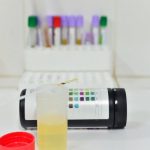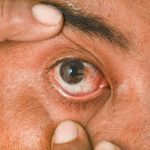 Another week has gone by, which means it’s time for your weekly health news roundup. It was an informative week, as we discussed ear fullness and its various causes and treatment options, what causes low blood pressure with high heart rate, as well as what may be causing neck spasms and the various treatments available. To better round off your week, we have also included highly detailed articles on proteinuria, a condition that causes you to excrete protein in your urine, as well as why you may have eyeball spots and what you can do about them.
Another week has gone by, which means it’s time for your weekly health news roundup. It was an informative week, as we discussed ear fullness and its various causes and treatment options, what causes low blood pressure with high heart rate, as well as what may be causing neck spasms and the various treatments available. To better round off your week, we have also included highly detailed articles on proteinuria, a condition that causes you to excrete protein in your urine, as well as why you may have eyeball spots and what you can do about them.
Ear fullness: Causes, symptoms, and treatments
Experiencing ear fullness can be a discomforting experience and is often described as having increased pressure within the ears or the ears feeling clogged or stuffed. Common methods for temporally decongesting the ears, such as yawning and swallowing, don’t seem to help as your ears and hearing remain muffled or slightly impaired for the duration.
Advertisement
Having ear fullness is a common sensation experienced by many. Our ears are complex structures that have many parts required for the conduction of sound. Disease, infection, or even direct injury could lead to a compromise in ear function and lead you to experience the sensation of fullness in the ears. Continue reading…
 What causes low blood pressure with a high heart rate?
What causes low blood pressure with a high heart rate?
Having a condition characterized by low blood pressure and high heart rate (pulse rate) may be cause for concern, prompting a visit to your local physician. Tachycardia, also known as a high heart rate, is a term used to refer to a pulse rate greater than 100 beats per minute and may be a reflex when the body senses a fall in blood pressure. This is generally considered a normal transient physiologic response that occurs to help correct an abnormality in blood pressure.
However, there are pathological conditions causing low blood pressure and high heart rate, such as when the neural connections between the heart and the brain become dysfunctional, often leading to fainting spells. This condition, as well as others, should be assessed by a trained physician to find the underlying cause. Continue reading…
 Neck spasm: Causes, symptoms, diagnosis, and treatment
Neck spasm: Causes, symptoms, diagnosis, and treatment
Neck spasms are best described as unexpected contractions of the muscles in the neck. A neck spasm can be very painful and can be due to a variety of different nerve or cervical related issues.
Generally speaking, neck spasms are not a serious health issue; however, they can be a sign of an underlying disorder or health problem. In some cases, neck muscle spasms can lead to chronic pain. In the majority of cases, muscle spasms in the neck make it hard for a sufferer to move his or her head to either side. Continue reading…
 Proteinuria (protein in urine) causes, complications, and symptoms
Proteinuria (protein in urine) causes, complications, and symptoms
Proteinuria, the presence of excessive or high amounts of protein in urine, can be an early sign of kidney disease. Healthy kidneys do not allow a significant amount of protein to exit the body through urine. But kidney damage can impact the filtering system, letting too much protein leak into the urine as a result.
Kidney disease in general does not have many early warning signs. So if your urine test results have revealed protein in your urine, you may want to go for a follow-up to ensure proper kidney function.
Advertisement
For younger people, protein in the urine isn’t that uncommon. It often results from exercising or an illness. In either case, going for a follow-up is very important to make sure you don’t overlook any serious condition. Continue reading…
 Eyeball spots: Causes, symptoms, and treatment
Eyeball spots: Causes, symptoms, and treatment
Having eyeball spots refers to any discoloration on the surface of the eyeball, not visual disturbances like floaters or seeing halos. These eyeball spots can be visually observed by other people.
Eyeball spots may be caused by a variety of different medical conditions or diseases. While some may be relatively harmless, others may be the result of significant health problems. Discoloration may appear as a brown, pink, red, yellow, or white spot on the eyeball, making those affected feel concerned that their vision is at risk. Continue reading…
